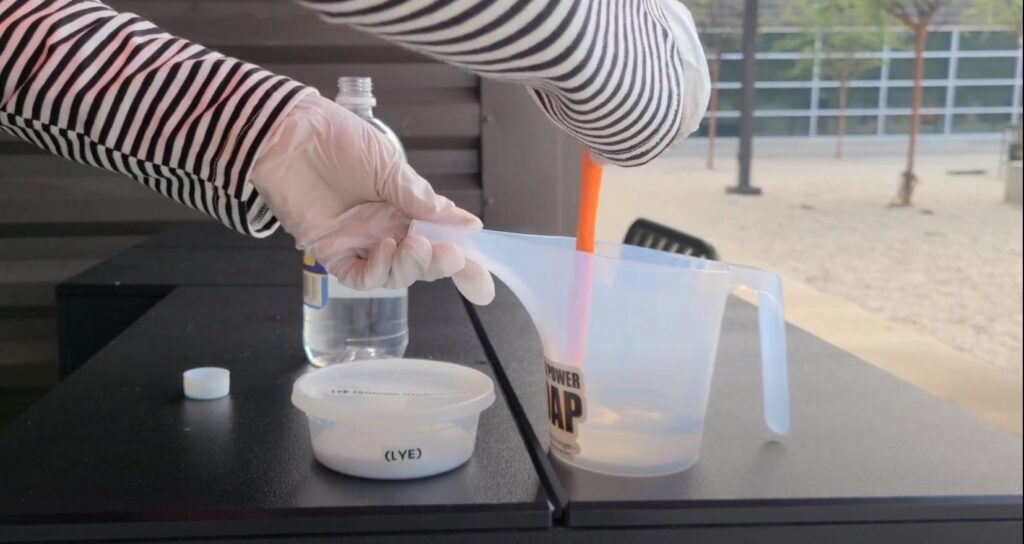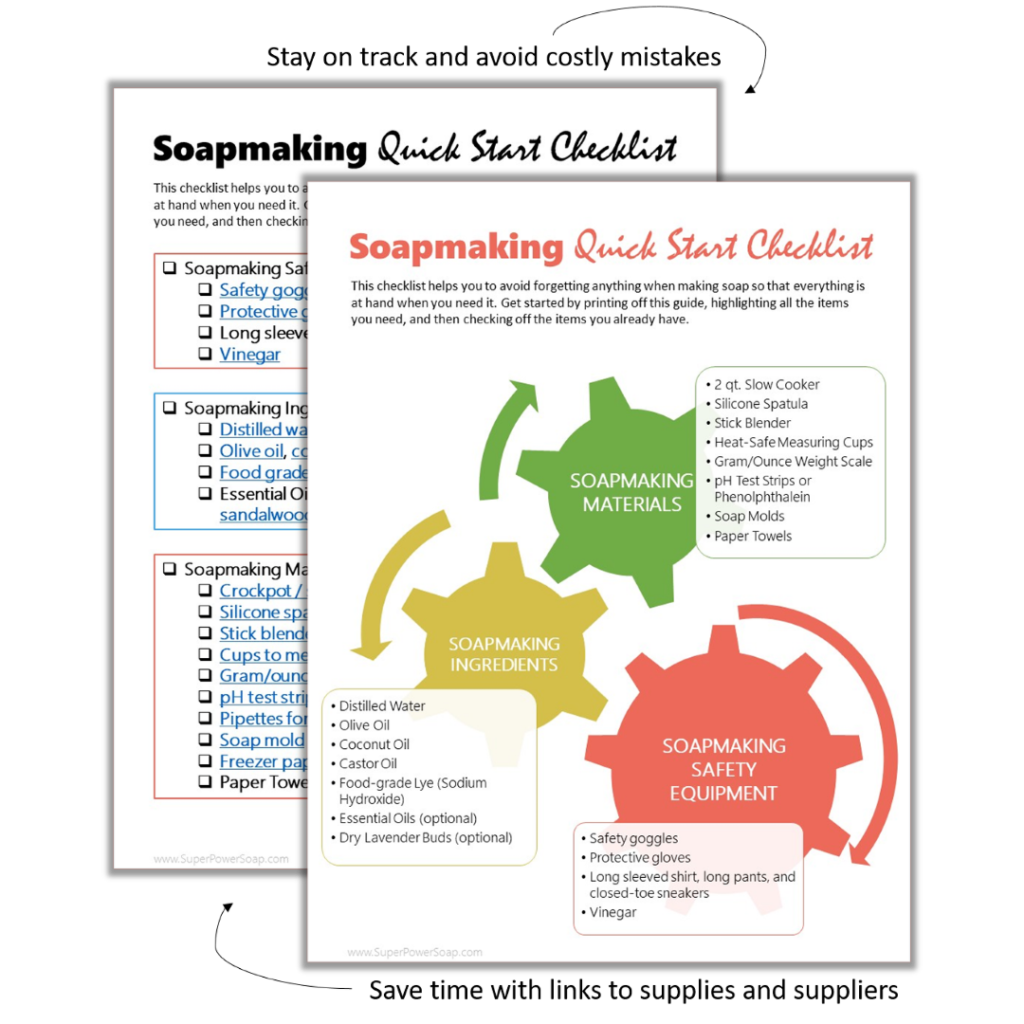The chemical sodium hydroxide (commonly known as lye or caustic soda) is a key ingredient in natural soapmaking.
Use extreme caution when handling lye. If handled improperly, it can severely burn unprotected skin.
Move children, pets, trip hazards, and any other distractions out of the area before working with lye. Find a space with plenty of ventilation (e.g., outdoors).
Here is the safety gear needed to make soap and protect the rest of your skin from accidental lye splashes or spills. Most of these supplies are sold locally at hardware and grocery stores.
Equipment
- Safety goggles
- Protective gloves
- Closed toe shoes
- Long sleeves and long pants
- Vinegar
Although vinegar is not a soapmaking ingredient, it is best practice to keep it nearby. If lye spills, pour vinegar on it. This will neutralize the spill and allow for safer clean up.
If a lye burn does occur, remove soaked clothing and call 911 or Poison Control and follow their instructions.

Mixing the Lye and Water Solution
Put on your goggles and gloves. Ensure your skin is completely covered. Move to a space with plenty of ventilation (e.g., the outdoors).
- Measure out the cold distilled water in a measuring cup on the scale.
- Carefully measure out the sodium hydroxide (lye) in a measuring cup on the scale. Note: Keep the vinegar close by and pour it directly on any lye that spills.
- In an area with plenty of ventilation, pour the distilled water into the heat-safe plastic pitcher.
- Now, carefully add the sodium hydroxide into the water pitcher. (ONLY pour lye INTO water! Pouring water onto lye can start a fire!).
- Gently mix the lye and water solution with a clean spatula until all of the lye kernels are completely dissolved. This will take a few minutes. Note: You will notice a strong smell coming from the reaction. Do not directly breathe this in, it will dissipate. The container is hot! This is a natural reaction.
Ready to make your own luxurious soap? Join my online course Simple Soapmaking for Sensitive Skin.

